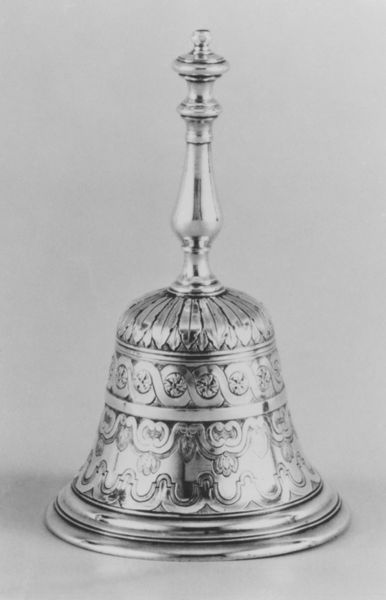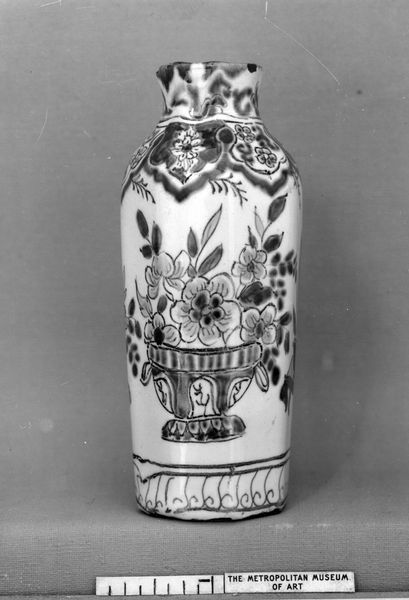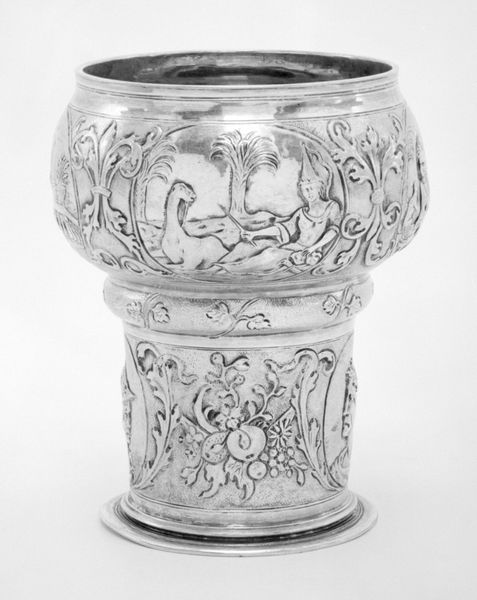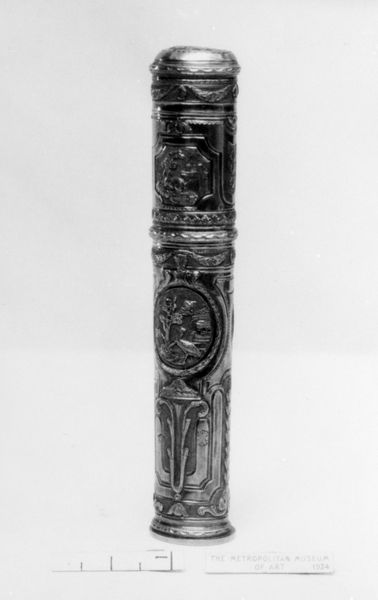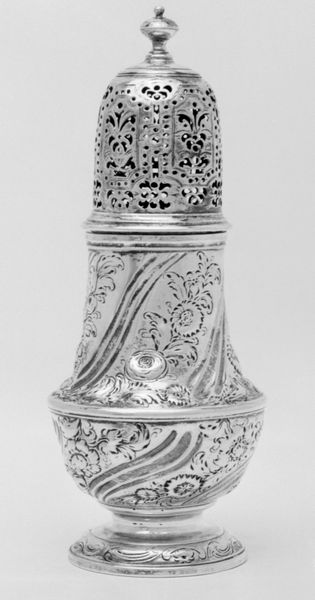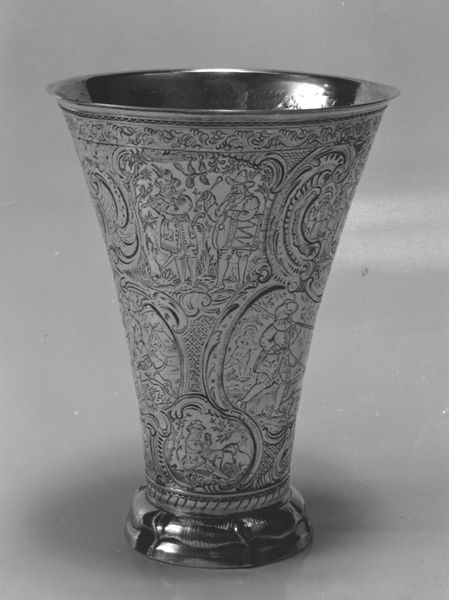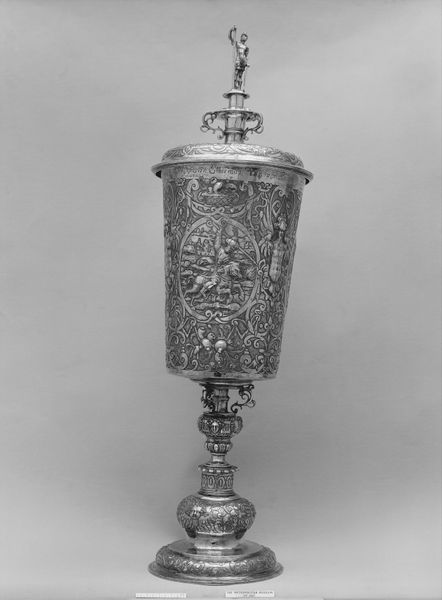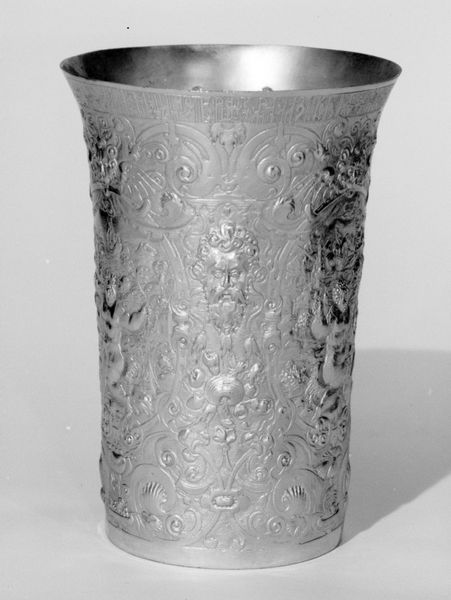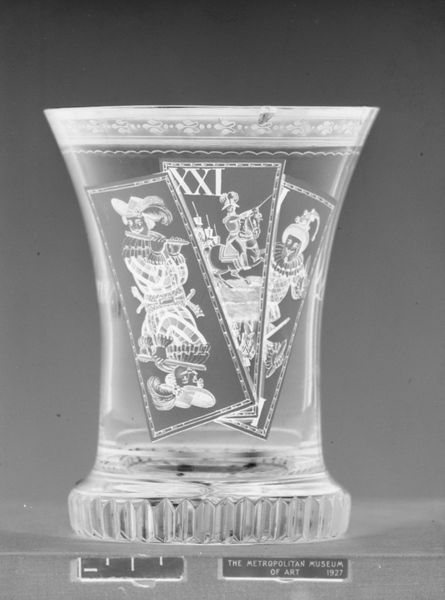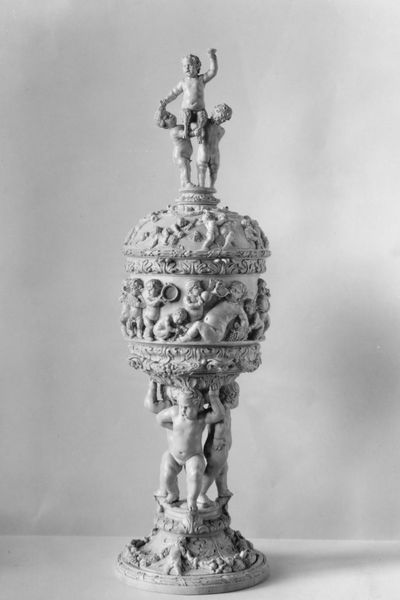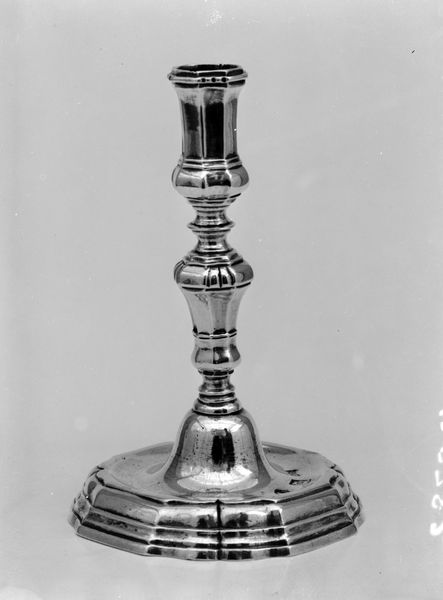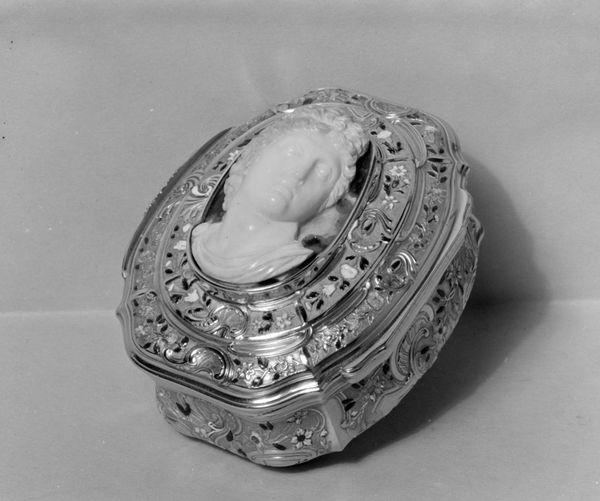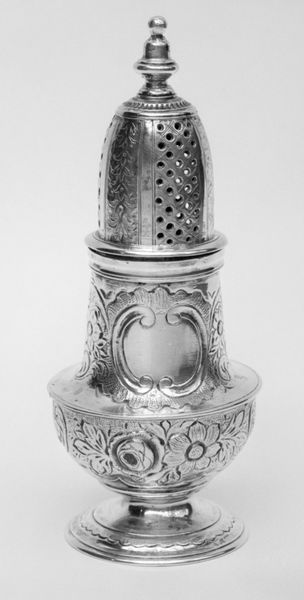
sculpture
#
sculpture
#
jewelry design
#
sculptural image
#
sculpture
#
black and white
#
genre-painting
#
decorative-art
#
miniature
Dimensions: 4 × 1 11/16 in. (10.2 × 4.3 cm)
Copyright: Public Domain
Editor: This is an 18th-century "Étui" currently housed at the Met, attributed to Philippe Ernst Schindler the younger. It seems to be made of precious metal with painted miniature scenes. I am struck by its intricate detail. What story does it tell, from your perspective? Curator: The "Étui", or case, offers a glimpse into 18th-century social dynamics, particularly concerning gender and class. Consider its function: likely holding small tools for sewing or writing, activities typically associated with women of leisure. Now, observe the painted scenes – what do they depict? Editor: There seem to be genre scenes, one possibly showing a mother with children and others engaged in domestic work. Curator: Exactly. These seemingly benign scenes were carefully chosen. Genre painting during this era often served to reinforce societal expectations. By showcasing women engaged in domestic activities on an object designed for their personal use, the "Étui" subtly naturalizes and celebrates a specific, constrained role for women. How does the decorative-art form challenge or support our ideas about sculpture as a high-art form? Editor: It's interesting to think about decorative arts as tools for social commentary, as the line between beauty and utility often obscured power dynamics within a social system. The case is elevated to social messaging. Curator: Precisely. Moreover, consider who likely commissioned and possessed such an object. It would have been a member of the elite, reinforcing their status not only through the precious materials but also through the display of prescribed gender roles. So how does knowing this impact our understanding of a seemingly innocuous decorative object? Editor: It completely changes the way I see it. It's not just a pretty object; it's a carrier of cultural values and assumptions about gender and class. Curator: Precisely. And recognizing that allows us to critically engage with the past and challenge similar biases that persist today. I love how our current social concerns enrich our knowledge and our understanding of art from previous centuries. Editor: I totally agree. I will certainly never see decorative arts the same way again. Thanks for sharing that amazing historical and theoretical context.
Comments
No comments
Be the first to comment and join the conversation on the ultimate creative platform.
